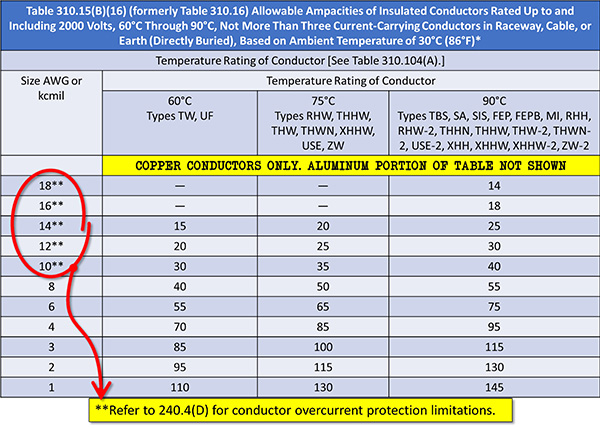Ampacity Table 310.15(B)(16).

When using conductor ampacity Table 310.15(B)(16), it is important to understand why some conductor sizes have a double asterisk (**). Conductor sizes 18 AWG through 10 AWG are considered “small conductors” and are subject to the rules for small conductors in 240.4(D).
Section 240.4(D) states the following:
Small Conductors. Unless specifically permitted in 240.4(E) or (G), the overcurrent protection shall not exceed that required by (D)(1) through (D)(7) after any correction factors for ambient temperature and number of conductors have been applied.
This section is where the all too familiar rules come from that require no larger than a 15 amp overcurrent device to protect a 14 AWG copper conductor, or a 20 amp max overcurrent device to protect a 12 AWG copper conductor, or a 30 amp max overcurrent device to protect a 10 AWG copper conductor. These values are generally true unless specifically permitted in 240.4(E) or (G).
Section 240.4(D) has nothing to do with the actual rating of the wire but everything to do with the maximum allowable fuse or circuit breaker used to protect the wire. Many electricians have confused these rules and think a type THWN, 10 AWG copper wire is only rated at 30 amps when in fact it is rated to carry 35 amps according to Table 310.15(B)(16) but in most cases a fuse or circuit breaker installed to protect the wire is not permitted to be larger than 30 amps as stated in 240.4(D).
For complete code sections, refer to the actual NEC® text at NFPA.ORG. Once there, click on their link to free access to the 2017 NEC® edition of NFPA 70.